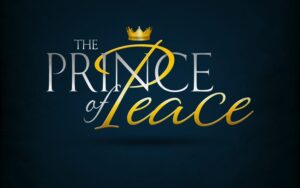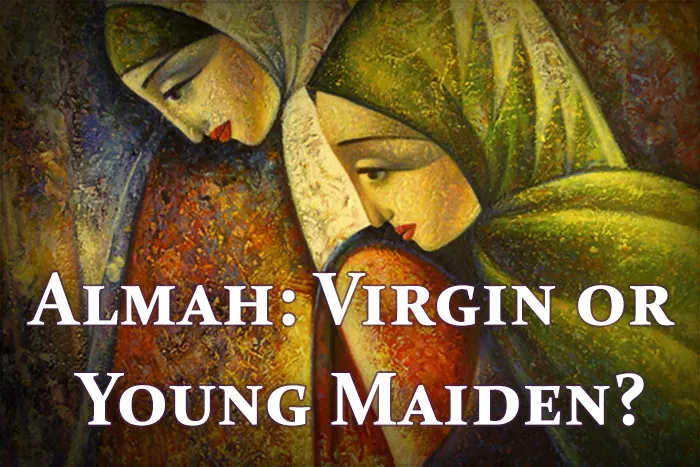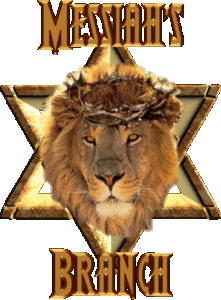Prince of Peace – Who Is He?
Often appearing in Christmas season cards, posters, songs and media is a Bible passage from Isaiah. It is a prophecy foretelling that a child will become a King whose kingdom will last forever. One of the King’s names is the “Prince of Peace” – who is he?[1]

Is 9:6-7 “For unto us a Child is born, Unto us a Son is given; And the government will be upon His shoulder. And His name will be called Wonderful, Counselor, Mighty God, Everlasting Father, Prince of Peace. Of the increase of His government and peace There will be no end, Upon the throne of David and over His kingdom, To order it and establish it with judgment and justice From that time forward, even forever…” – New King James Version
IS 9:5-6 “For a child has been born to us, a son given to us, and the authority is upon his shoulder, and the wondrous adviser, the mighty God, the everlasting Father, called his name, ‘the prince of peace.’ To him who increases the authority, and for peace without end, on David’s throne and on his kingdom, to establish it and to support it with justice and with righteousness; from now and to eternity…” – Complete Jewish Bible with Rashi Commentary
Hebrew text for this name is Sar Shalowm.[2] Sar means “prince” and Shalowm, commonly recognized as the Jewish greeting Shalom, means “peace;” it root word means “to be safe…figuratively, to be completed.”[3]
Hebrew word qara’ is translated as “called” or “name.” It is the same word used in the Isaiah 7:14 prophecy where the future boy child is to be “called” Immanuel.
Two Rabbi sage contributors to the Jewish Babylonian Talmud discussed the identity of the “Prince of Peace.” The entire dialog can be found in Babylonian Talmud Tract Derech Eretz-Zuta, chapter on Peace.[4]
One of the contributor sages, Rabbi Jehoshua, quoted from Judges 6:24 where Gideon, a famed Hebrew judge, military leader and prophet, named an altar to God Jehovah Shalowm, translated as “the LORD is Peace.” It is the place where Gideon met an angelic messenger and spoke to the LORD:[5]
“The name of the Holy One, blessed be He, is also “peace” (Shalom), as it is written: “And called it Adonay-shalom.”
Expanding on Jehoshua’s statement, Rabbi Jose the Galilean identified the Messiah as the “prince of peace” because Isaiah 9:5/6 unambiguously says it is:
“The name of the Messiah is also “peace” (Shalom), as it is written: “The prince of peace.””
Going into more detail, Rabbi Galilean pointed to Deuteronomy 20:10 and the prophecy of Isaiah 52:7, part of the Isaiah 52-53 parashah about “My Servant,” to support his position that the Messiah will be known for his great characteristic of peace:
“When the Messiah shall come to Israel, he will begin with peace, as it is written: “How beautiful upon the mountains are the feet of the messenger of good tidings, that publisheth peace, that announceth tidings of happiness, that publisheth salvation, that saith unto Zion, Thy God reigneth.” He also said: Great is peace, because even wars are waged for the sake of peace…”
Jumping back into the dialog, Rabbi Jehoshua referred to Isaiah 26:3, part of a prophecy saying a song of praise will be sung, saying the “Holy One” would use peace to uphold the righteous because of their trust in him:
“In the future the Holy One, blessed be He, will uphold the righteous with peace, as it is written [Is. xxvi. 3]: “The confiding mind wilt thou keep in perfect peace; because he trusteth in thee.””
Centuries later, Jewish sage Rabbi Rashi‘s commentary disagreed with Rabbi Jose the Galilean. Instead, Rashi wrote the Isaiah 9 prophecy likely refers to King Hezekiah, a descendant of King David. The Rabbi opined “Prince of Peace” was only an expression though he acknowledged it could be another name for the “Holy One” without mentioning the Messiah:[11]
“…it is possible to say that “Prince of Peace,” too, is one of the names of the Holy One, blessed be He, and this calling of a name is not actually a name but an expression of (var. for the purpose of) greatness and authority…On the throne of the kingdom of David shall this peace be justice and righteousness that Hezekiah performed.”
“He [Hezekiah] increased the authority upon his shoulder, and what reward will He [God] pay him? Behold, his peace shall have no end or any limit.”
Qumran scrolls discoveries included its the crown jewel, a complete Hebrew text scroll of Isaiah known as the “The Great Isaiah Scroll.”[12] Isaiah’s book was originally written around 700 BC and the Great Isaiah Scroll is dated to between 200-100 BC. The Scroll provides the oldest “side-by-side” text opportunity to date.
One translator of the Great Isaiah Scroll, Fred P. Miller, explained the translation methodology on his website, The Translation of the Great Isaiah Scroll. His direct translation of the Hebrew text:[13]
Great Isaiah Scroll 9:6-7:
[Line] 23…Because a child shall be born to us and a son is given to us and the government shall be upon
[Line] 24. his shoulders and he shall be called wonderful, counsellor, mighty God, everlasting father the prince of peace. (6) Of the increase
[Line] 25. of his government [&waw&} and his peace there shall be no end. upon the throne of David and over his kingdom to order it and to establish it
Line] 26. in judgement and in righteousness from and until eternity, The zeal of YHWH of Hosts will perform this.
Isaiah 9:-6-7 is a prophecy saying a child will be born in the lineage of King David who will become an eternal King and he will be called by many names “Wonderful, Counselor, Mighty God, Everlasting Father, Prince of Peace.”
Is Jesus of Nazareth the eternal King who will be called the “prince of peace”?
Updated September 28, 2023.
This work is licensed under a Creative Commons Attribution-NonCommercial-NoDerivatives 4.0 International License.
REFERENCES:
[1] NKJV. “The Prince of Peace. Eric Echols. Image. 2019. <https://ericecholslive.files.wordpress.com/2019/12/prince-of-peace.jpg>
[2] sar <08269>. NetBible.org. Hebrew text. <http://classic.net.bible.org/strong.php?id=08269> “8363.” Strong’s Concordance with Hebrew and Greek Lexicon. Eliyah.com. n.d. <http://www.eliyah.com/cgi-bin/strongs.cgi?file=hebrewlexicon&isindex=8323>
[3] Y@havah shalowm” <03073> Net.Bible.org. Hebrew text. “Shalom.” Ravitzky, Aviezer. “Shalom: Peace in Hebrew.” n.d. <https://www.myjewishlearning.com/article/shalom> “7965 ‘shalowm.’” Strong’s Concordance with Hebrew and Greek Lexicon. Eliyah.com. n.d. <http://www.eliyah.com/cgi-bin/strongs.cgi?file=hebrewlexicon&isindex=+shalowm> “7999 ‘shalam.’” Strong’s Concordance with Hebrew and Greek Lexicon. Eliyah.com. n.d. <http://www.eliyah.com/cgi-bin/strongs.cgi?file=hebrewlexicon&isindex=shalam> Berkowitz, Matthew. “Greetings of Peace.” 2006 <http://www.jtsa.edu/greetings-of-peace> “Hebrew: Greetings & Congratulations.” Jewish Virtual Library. 2019. <https://www.jewishvirtuallibrary.org/hebrew-greetings-and-congratulations>
[4] The Babylonian Talmud.Trans. Michael L. Rodkinson. 1918. Tract Derech Eretz-Zuta. Chapter on Peace. <https://www.sacred-texts.com/jud/t05/ere18.htm>
[5] Judges 6:24. Hebrew text. NetBible.org. <http://classic.net.bible.org/verse.php?book=Jdg&chapter=6&verse=24>
[6] “The Septuagint (LXX).” Ecclesiastic Commonwealth Community. n.d. <http://ecclesia.org/truth/septuagint.html>
[7] Josephus, Flavius. Antiquities of the Jews. Book XII, Chapter II.1-6; 13-1.. Trans. and commentary William Whitson. The Complete Works of Josephus. 1850. <http://books.google.com/books?id=e0dAAAAAMAAJ&printsec=frontcover&source=gbs_ge_summary_r&cad=0#v=onepage&q&f=false> English Translation of the Greek Septuagint Bible. Trans. Brenton, Lancelot C. L. 1851. <http://www.ecmarsh.com/lxx> “Septuagint.” Septuagint.Net. 2018. <http://septuagint.net> “Septuagint.” Encyclopædia Britannica. 2019. <https://www.britannica.com/topic/Septuagint>
[8] Ofer, Yosef. “The Aleppo Codex.” n.d. <http://www.aleppocodex.org/links/6.html> Bergman, Ronen. “A High Holy Whodunit.” New York Times Magazine. July 25, 2012. <https://www.nytimes.com/2012/07/29/magazine/the-aleppo-codex-mystery.html> Ben-David, Lenny. “Aleppo, Syria 100 Years Ago – and Today.” 23/07/15. Arutz Sheva 7 | isralenationalnews.com. <http://www.israelnationalnews.com/News/News.aspx/198521>
[9] Lundberg, Marilyn J. “The Leningrad Codex.” USC West Semitic Research Project. 2012. University of Southern California. 8 Jan. 1999. <https://web.archive.org/web/20170403025034/http://www.usc.edu/dept/LAS/wsrp/educational_site/biblical_manuscripts/LeningradCodex.shtml> Leviant, Curt. Jewish Virtual Library. 2019. “Jewish Holy Scriptures: The Leningrad Codex.” <https://www.jewishvirtuallibrary.org/the-leningrad-codex> “Leningrad Codex.” Bible Manuscript Society. 2019. <https://biblemanuscriptsociety.com/Bible-resources/Bible-manuscripts/Leningrad-Codex> Leviant, Curt. Jewish Virtual Library. 2019. “Jewish Holy Scriptures: The Leningrad Codex.” <https://www.jewishvirtuallibrary.org/the-leningrad-codex>
[10] Cohen, Menachem. “The Idea of the Sanctity of the Biblical Text and the Science of Textual Criticism.” Eds. Uriel Simon and Isaac B Gottlieb. 1979. Australian National University. <http://cs.anu.edu.au/%7Ebdm/dilugim/CohenArt> Cohen, Menachem. “Mikra’ot Gedolot – ‘Haketer’ – Isaiah.” 2009. <http://www.biupress.co.il/website_en/index.asp?id=447>
[11] Isiah 9:6. The Complete Jewish Bible – with Rashi Commentary.n.d. <https://www.chabad.org/library/bible_cdo/aid/15940/showrashi/true>
[12] Benner, Jeff A. “The Great Isaiah Scroll and the Masoretic Text.” Ancient Hebrew Research Center. 2019. <https://www.ancient-hebrew.org/dss/great-isaiah-scroll-and-the-masoretic-text.htm> “The Dead Sea Scrolls.” The Israel Museum. 2019. <https://www.imj.org.il/en/wings/shrine-book/dead-sea-scrolls> “Isaiah.” Biblica. Abegg, Jr., Martin G., Flint, Peter W. and Ulrich Eugene Charles. The Dead Sea Scrolls Bible: the oldest known Bible translated for the first time into English. “Introduction”, page x. (page hidden by Google Books). 2002. <https://books.google.com/books?id=c4R9c7wAurQC&lpg=PP1&ots=fQpCpzCdb5&dq=Abegg%2C%20Flint%20and%20Ulrich2C%20The%20Dead%20Dead%20Sea%20Scrolls%20Bible%2C&pg=PP1#v=onepage&q=Isaiah&f=false>
[13] Miller, Fred P. “The Translation of the Great Isaiah Scroll.” n.d. <https://www.ao.net/~fmoeller/qa-tran.htm> Miller, Fred P. “”Q” = The Great Isaiah Scroll.” Translation. n.d. <http://www.moellerhaus.com/qum-intr.htm>

 Translation of `almah is one of the most controversial in the Jewish and Christian Bibles. One side claims `almah means “young woman” which may or may not include a state of virginity.
Translation of `almah is one of the most controversial in the Jewish and Christian Bibles. One side claims `almah means “young woman” which may or may not include a state of virginity.